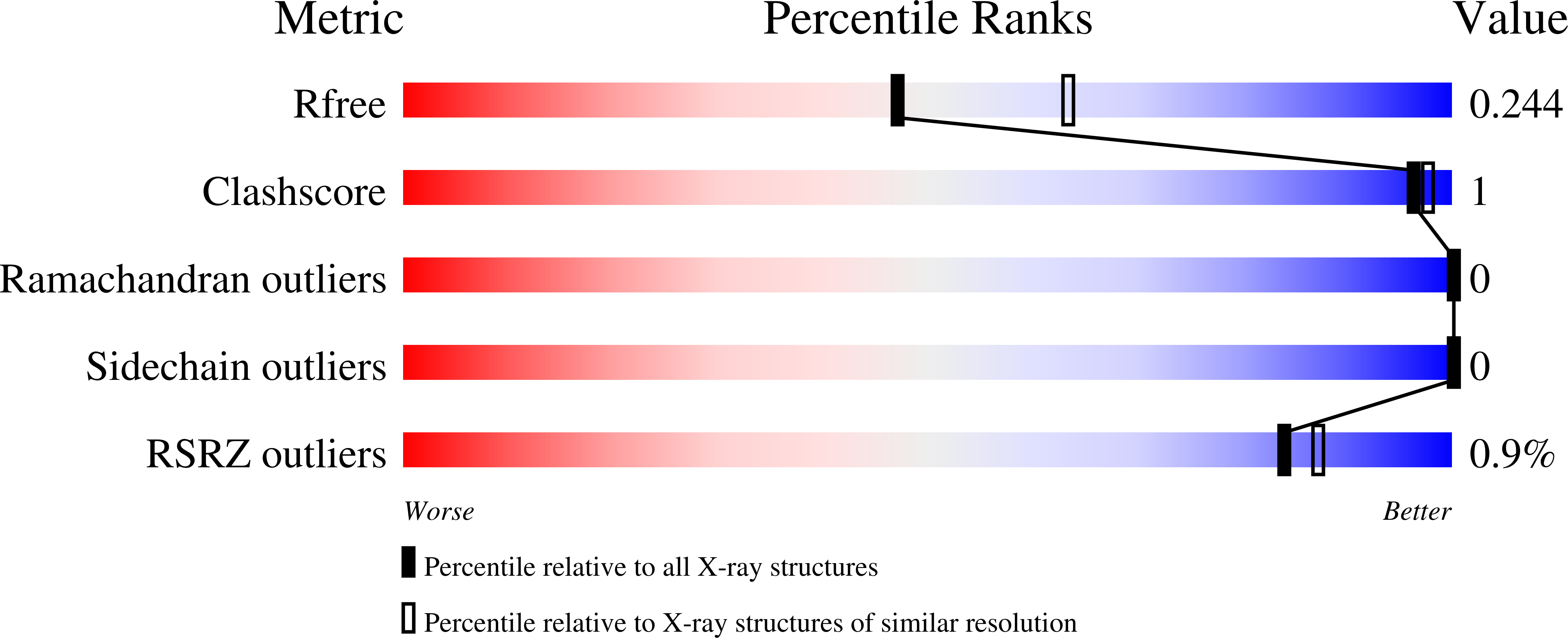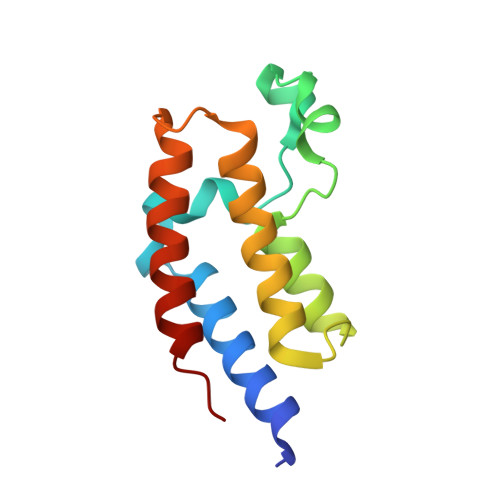The Optimization of a Novel, Weak Bromo and Extra Terminal Domain (BET) Bromodomain Fragment Ligand to a Potent and Selective Second Bromodomain (BD2) Inhibitor.
Seal, J.T., Atkinson, S.J., Aylott, H., Bamborough, P., Chung, C.W., Copley, R.C.B., Gordon, L., Grandi, P., Gray, J.R.J., Harrison, L.A., Hayhow, T.G., Lindon, M., Messenger, C., Michon, A.M., Mitchell, D., Preston, A., Prinjha, R.K., Rioja, I., Taylor, S., Wall, I.D., Watson, R.J., Woolven, J.M., Demont, E.H.(2020) J Med Chem 63: 9093-9126
- PubMed: 32702236
- DOI: https://doi.org/10.1021/acs.jmedchem.0c00796
- Primary Citation of Related Structures:
6ZB0, 6ZB1, 6ZB2, 6ZB3 - PubMed Abstract:
The profound efficacy, yet associated toxicity of pan-BET inhibitors is well documented. The possibility of an ameliorated safety profile driven by significantly selective (>100-fold) inhibition of a subset of the eight bromodomains is enticing, but challenging given the close homology. Herein, we describe the X-ray crystal structure-directed optimization of a novel weak fragment ligand with a pan-second bromodomain (BD2) bias, to potent and highly BD2 selective inhibitors. A template hopping approach, enabled by our parallel research into an orthogonal template ( 15 , GSK046), was the basis for the high selectivity observed. This culminated in two tool molecules, 20 (GSK620) and 56 (GSK549), which showed an anti-inflammatory phenotype in human whole blood, confirming their cellular target engagement. Excellent broad selectivity, developability, and in vivo oral pharmacokinetics characterize these tools, which we hope will be of broad utility to the field of epigenetics research.
Organizational Affiliation:
IVIVT Cellzome, Platform Technology and Science, GlaxoSmithKline, Meyerhofstrasse 1, 69117 Heidelberg, Germany.

















